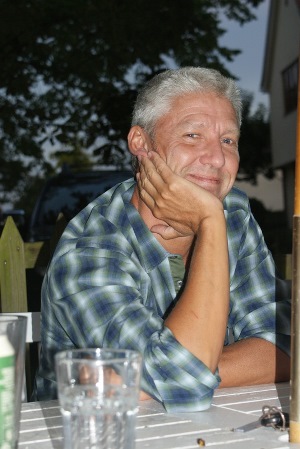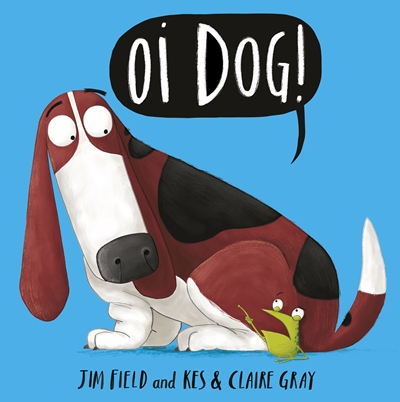I’m going to say something very simple. Here goes:

Picture books are 5-800 words long. They have twelve double page spreads. Max 13.
For me, that simple nugget of information was exactly what I needed to get properly started as a picture book children’s author. Up until that moment my formatting was a shambles; I was a swirling, raging, maelstrom of ideas destined for the plug hole.
Understanding those very basic mechanics of a picture book meant everything to me. In fact, it spurred me to take a month-long sabbatical from work and to write a dozen (to length) picture book texts, which I then fired off in the direction of three big-name publishers.
After a year-long doormat vigil all were rejected, two, finally, were accepted, ironically by phone. (I burnt the doormat.)
More complicated
Now I’d like to say something very complicated; something I think I've only just truly come to understand after seventeen years of writing, rewriting and re rewriting picture books.
The best picture books are a 5-800 word, twelve consecutive page- turning lovefest in which words, pictures, typography and page dynamics coalesce so joyously they leave the writer, author, editor and designer needing reconstructive surgery to stop themselves smiling.
To put it simply, the best picture books aren’t simple at all. They are really hard work.
Believe me, they really are.
I think at the moment I am the happiest picture book writer I have ever been. Maybe because with Oi Frog, Jim Field and I have taken that hoary old chestnut ‘ The Cat Sat On The Mat’, shaken it up, stuffed it into a sack and dropped it into a canal.
It’s a great feeling. Because the next time a builder down the pub asks me if I write things like ‘The Cat Sat On The Mat’ I can look them squarely in the eye and say “No. More like ‘The Puma sat on the Satsuma’ or the ‘Cheetah sat on the Fajita’, actually.”
Believe me, persuading a hod carrier that words can be your breeze blocks isn’t easy.
Upping the ante
The assumption that picture books are easy to write goes back a long way to the days when picture books were, well, easier to write. When I was a boy there were only one hundred and twenty five words in the Oxford English Dictionary and Enid Blyton only used half of them. A was for Apple, B was for Ball, C was for Cat and all the other letters were needed for Alphabetti Spaghetti. Today the ante has been upped.
If you want to get a commission as a children’s author today then the challenge for you and for me, is to surprise. Torch the dragons, pull the wings off your fairies, burn the witches, de fluff your bunnies, barbecue your teddies and stick a wand where the wizard don’t shine, because it’s all been done before.
How do I know? Because I’ve been there myself and I still find myself sleep walking back there.
I guess the point I’m trying to make is that if you can surprise yourself with the texts you are submitting then in my view you have ticked the first box. If you can surprise a publisher with the texts you are submitting then you really might be in business.
I read in the online news the other day that it is a hundred and fifty years since Peter Rabbit nibbled his first carrot. Can you imagine how many stories have flowed under the publishing bridge since? Can you imagine how much slush has fallen and melted by the wayside? By my calculations it’s enough to fill a very large bath (I got a C at GCSE maths.)
So what do you have to do to get a commissioning editor to sit up and take notice? In my view Apples, Balls and Cats aren't going to do it.
Think Attitude, think Bum, think Couscous. Actually no, think Anchovy, think Bonkers, think Caravan Park. Actually just keep thinking and thinking and thinking AND THEN, even when you think you are finally there with your thinking , think long and hard about whether you are right.
If you are, congratulations! Now the fun really begins.

‘Lovefest’: The collaborative process
If you think as a writer that your job is done when your text is accepted then you are wrong. Or at least if you are not wrong, you are short changing yourself. If you love and care about your text then you need everyone involved in the publishing process to love it and care for it as much as you do.
Stay involved. Get crafting. Share the love.
I love to craft. Jim Field loves to craft. You can see it in his end papers, you can see it in his illustrations. Ask Jim to illustrate a moth and he will give you a moth reading a magazine called ‘Lightbulb’. Ask Jim to draw you a guppy and he will draw you five different kinds. He doesn't do it because he’s asked to do it but simply because he loves to do it.
Jim has an animation background. He has learned how to storyboard, he knows how to work a page, and he knows how to draw a reader into and through a story.
I have an advertising background. I have learned how to story board, I know how to work a page, and I know how to draw a reader into and through a story.
Jim and I are a tight fit. We share the same sense of humour and will push and tweak things to the very end. As will our fabulous editor (Emma) and designer (Jenny). We all love what we do and what everyone else does too. That’s the way things should be.
In truth much of what we do the reader will never notice; a line of typography deliberately placed top right, a rhyming couplet deliberately chopped in half with a page turn, a deliberate change of type face for just one word, a deliberate change of font size for just one character, a sequence of vignettes deliberately deployed to break up a sequence of single page images, the permutations are endless. And so they should be, because just as every picture book text is different, every picture book layout should be too.
As Plato once said (slight fib) 'Love your text all the way to the bookshelf and you will have the readers’ eyes yo-yo-ing gloriously to the rhythm and direction of the text without them even realising.'
Rejection: Don’t be afraid to get it wrong!
I hope some of this has been of use. It’s twenty five years since I sat down to write my first picture book, and seventeen since my first picture book was published. Yup, eight years getting it wrong; more, in fact. My latest picture book text is called ‘A Mouse Just Ate My House’. I submitted it two days ago and it’s just been rejected.
That’s the trouble with editors. They just keep getting it wrong too.
PS. You can see Jim’s moths and his guppies in our sequel to ‘Oi Frog’. It’s called ‘Oi Dog’ and it publishes in June. My wife encouraged me to write the sequel and came up with some of the rhymes during a four hour car journey to Wales. Hence the credit! (I came up with all the best ones though.)
The picture books Kes is proudest of are: Eat Your Peas, Billy’s Bucket, Mum & Dad Glue, Nuddy Ned, Oi Frog, Oi Dog, Quick Quack Quentin, Not Now Bernard. (If only)
Find out more about Kes and his work on his website here.
Comments